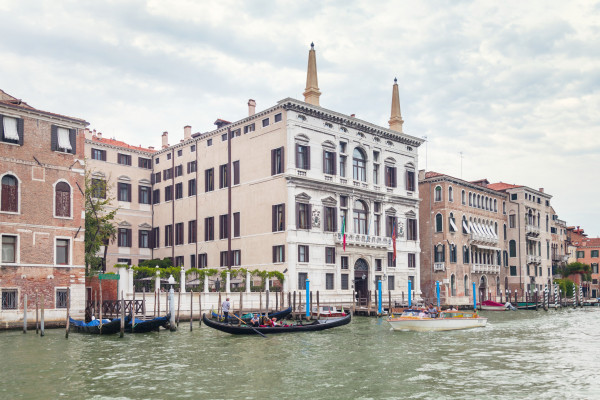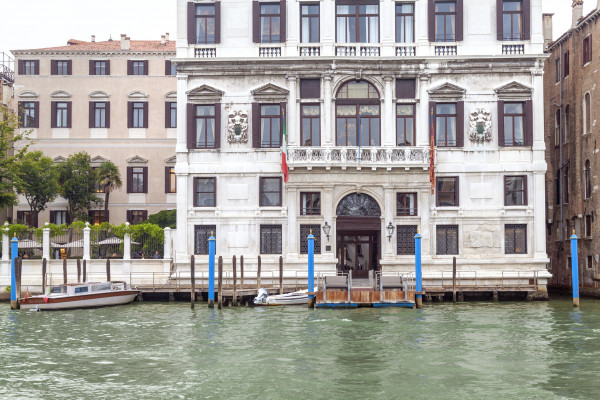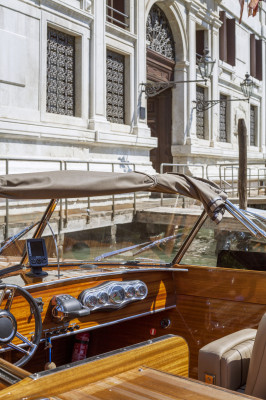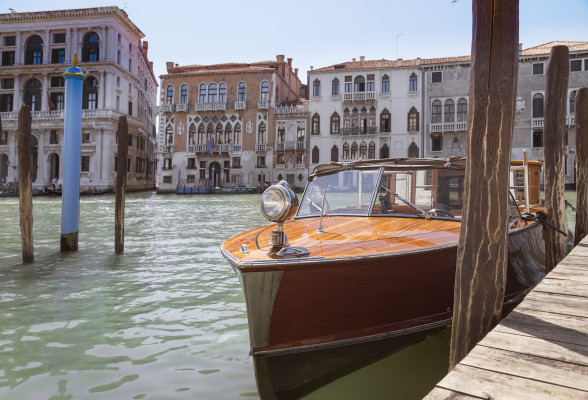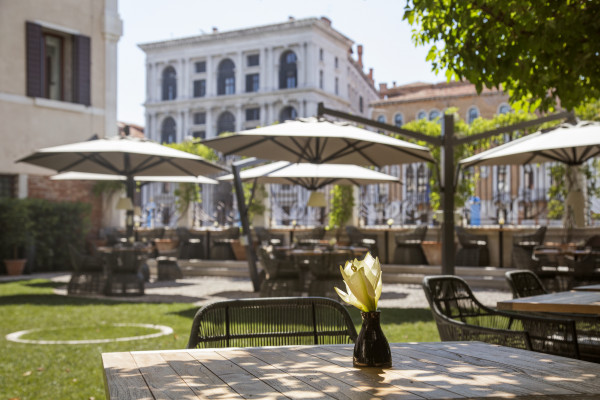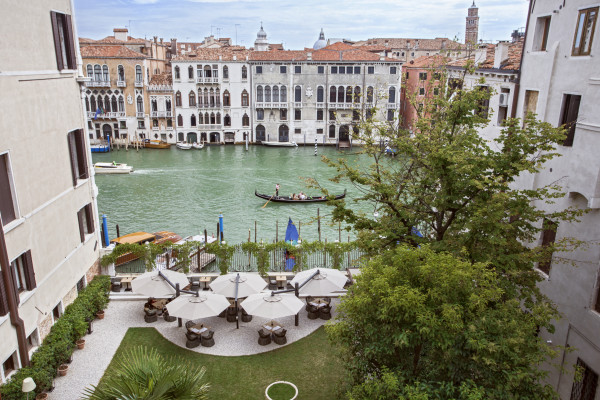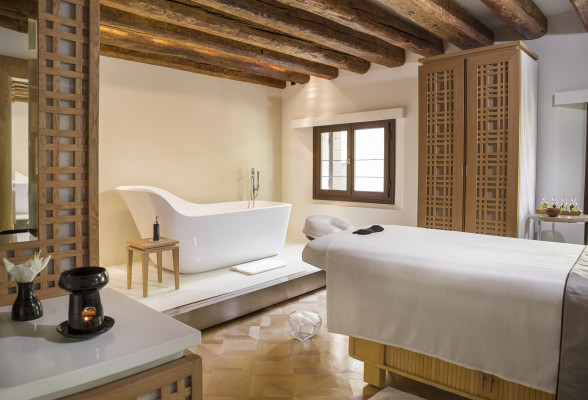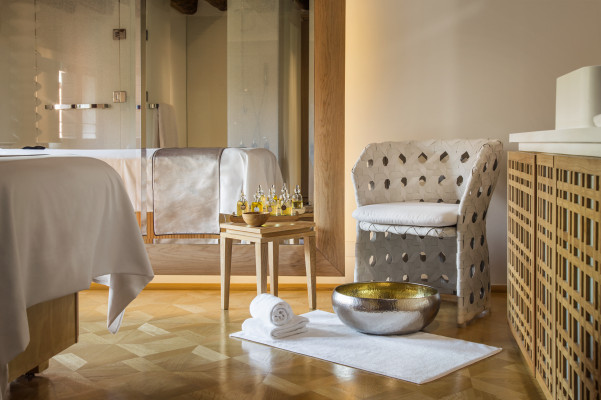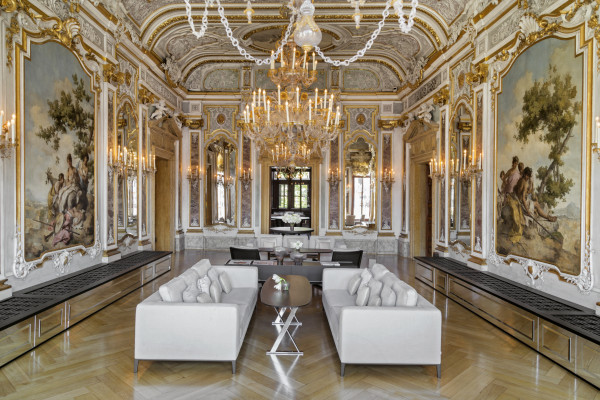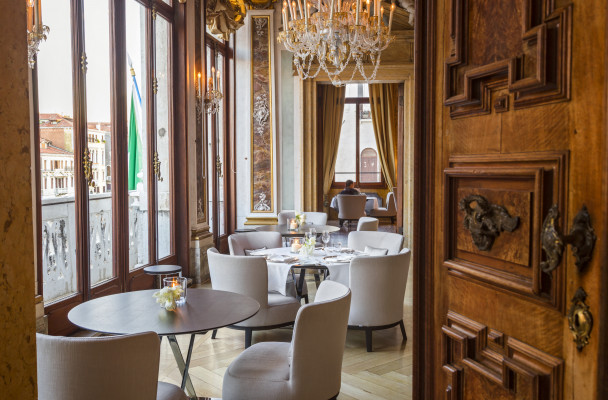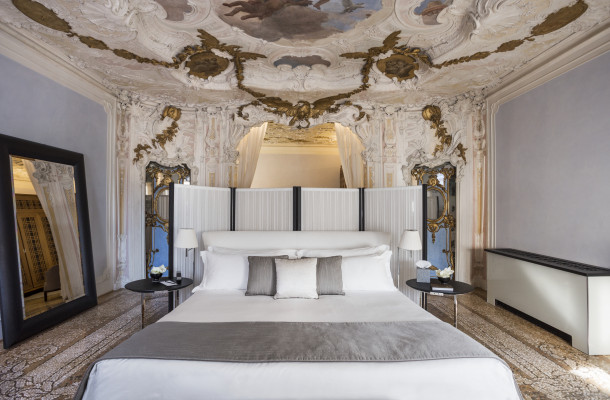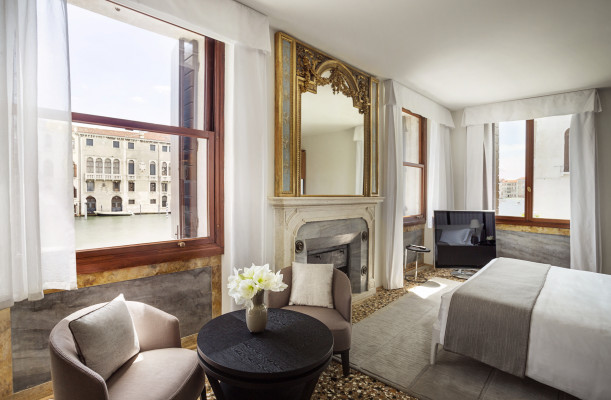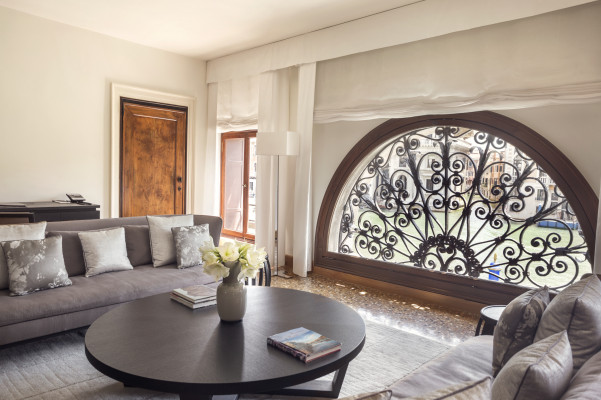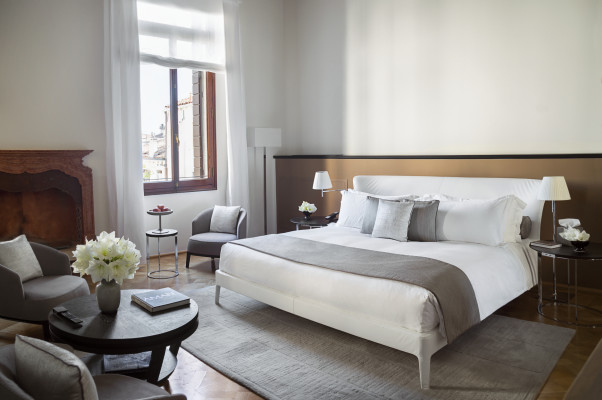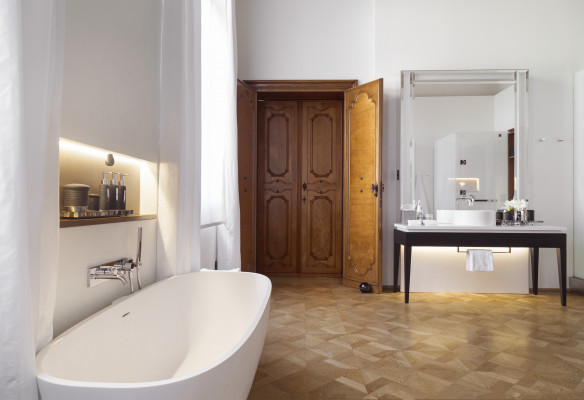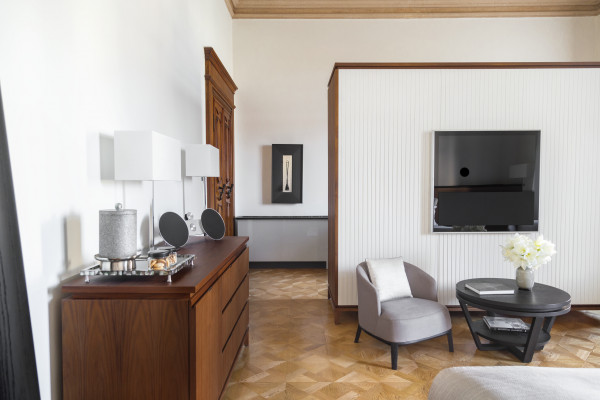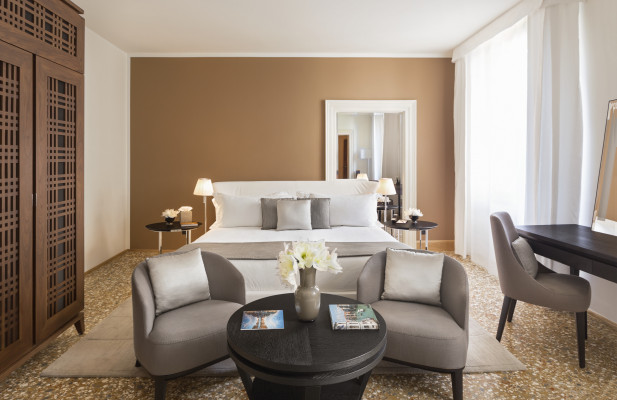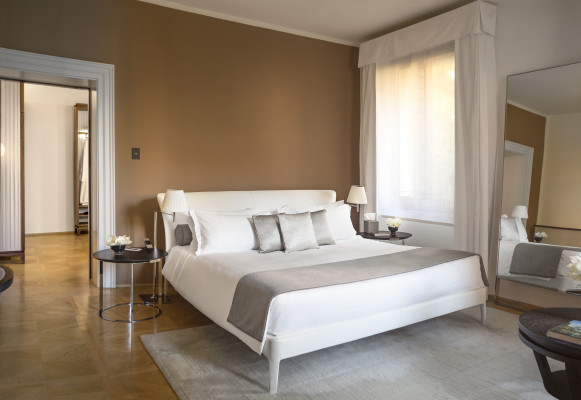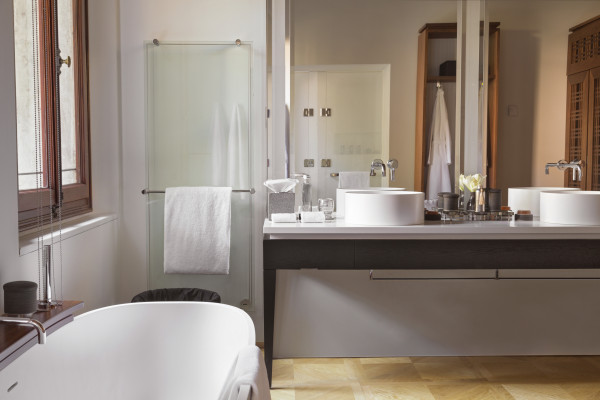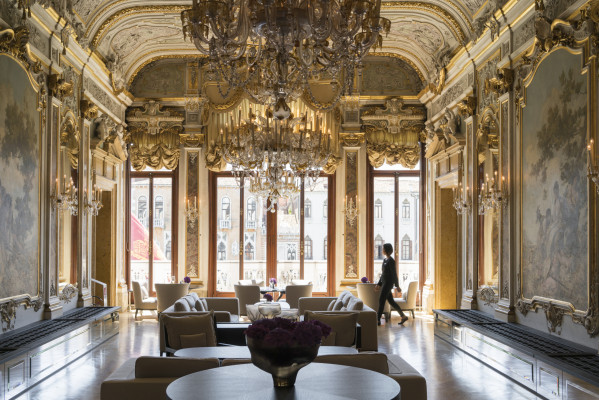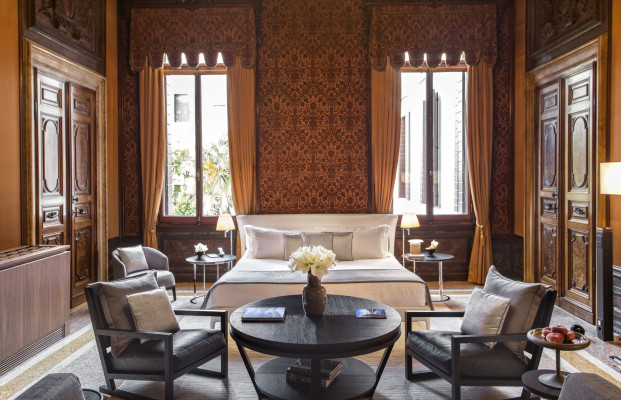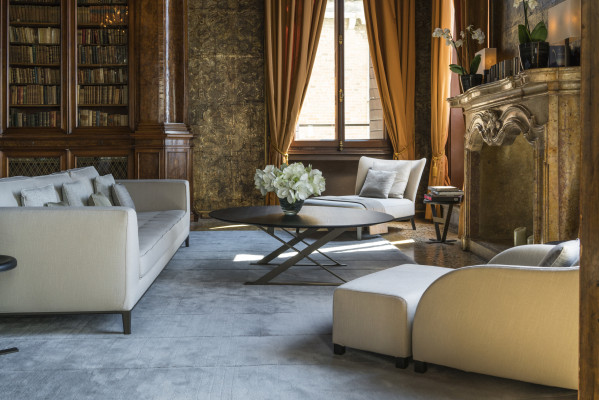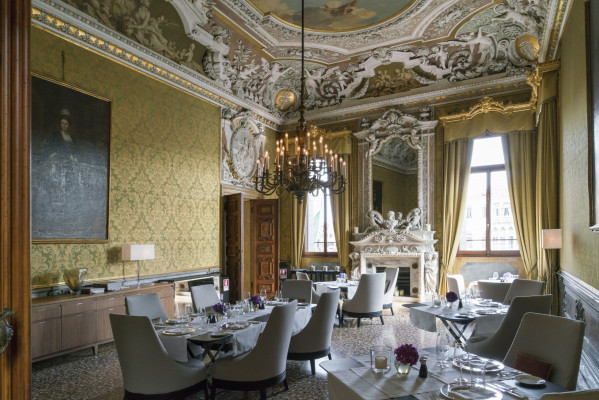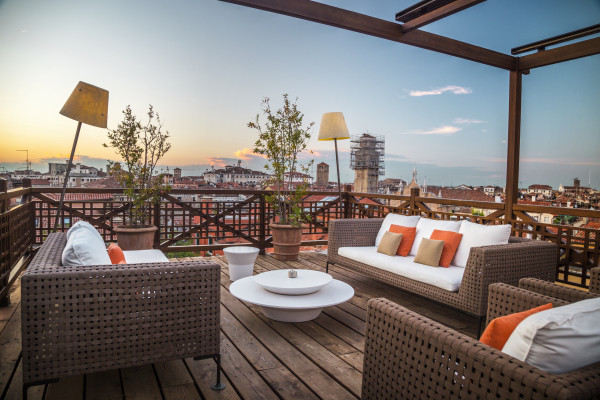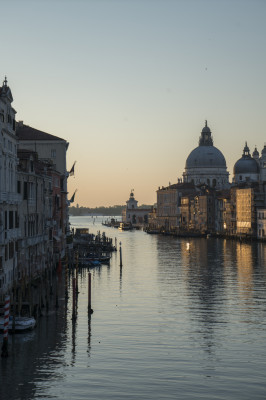Aman Venice Hotel
EST. 2013
Minimalism and discreet luxury characterize Aman around in the world.
Aman Venice overlooks the Grand Canal and is located in “sestiere” of San Polo, the smallest of the six districts of the city and one of the most authentic and historical, known for its magnificent private houses, churches and markets.
- Style
-
Contemporary
Cultural
Elegant
Italian
Sophisticated
Venue Setting
Aman Venice overlooks the Grand Canal and is located in “sestiere” of San Polo, the smallest of the six districts of the city and one of the most authentic and historical, known for its magnificent private houses, churches and markets.
The 16th century Palazzo, in which Aman Venice is housed, was built by architect Giacomo De Grigi, as commissioned by the Coccina family of Bergamo. In 1864 the brothers Nicolò and Angelo Papadopoli Aldobrandini purchased it. They entrusted the restoration of the ”piano nobile” - the largest living area of the Palazzo - in pure Neo-Renaissance and Rococo style to Michelangelo Guggenheim, a leading designer of the Scuola Veneta d’Arte. The Papadopoli brothers also decided to buy the adjoining buildings to create two gardens which today amongst the rarest and most carefully tended private green areas of the city.
Today the decedents of the Papadolpli family also still live in of the building making the Palazzo in every respect sill a home.
THE RENOVATION
The renovation of the Palazzo that today houses Aman Venice was done under the guidance of Claudio Rebeschini and executed by Dottor Group, one of the most important Italian companies in the field of conservation of cultural heritage and won the heritage prize for the best restoration in Italy in 2014.
THE ROOMS
Aman Venice offers 24 rooms and suites. Each is different from the next. All feature unique design, some with precious frescoes protected by the Belle Arti, stucco and details that reflect the splendor of art and architecture of past centuries including some the famed artist Givoanni Battista Tiepolo. The Venetian style is in harmonious contrast with the furnishings and the contemporary design of Jean Michel Gathy which reflect the aesthetic vision, the minimalism and the discreet luxury that characterize Aman around in the world.
There are 9 room types, depending on the interior, the view they offer and the size, that varies from the 50 sq. m. of the Palazzo Room to the 103 sq. m. All represent the quintessence of the refined Venetian style with a modern twist:
Palazzo Bedroom – located on the Garden level
Palazzo Chamber Affresco – offer views of the Private Garden and frescoed ceiling
Palazzo Chamber Luminoso - overlook the garden on the Canal Grande and offer the renowned beauty of Venetian light thanks to their southerly exposure
Palazzo Stanza – feature spectacular views of the Grand Canal and many have magnificent architectural details
Maddalena Stanza – characterized by silk drapery, very high frescoed ceilings, Murano glass lamps in the bathroom and large windows that look on to the garden and the Grand Canal
Papadopoli Stanza – distinguished by very high frescoed ceilings, both in the bedroom and bathroom, a view of the garden and the Grand Canal
Sansovino Stanza – originally defined as “the Hall of the Four Doors”, it houses a sumptuous fireplace designed by Jacopo Antonio Sansovino, one of the most famous architects of the early 16th century, decorative friezes on the walls, carved ceiling and boiseries
Canal Grande Suite – situated in front of the main door to the Palazzo, it overlooks the Grand Canal, offering extraordinary views
Alcova Tiepolo Suite – characterized by the frescoes of 1750 by Giovanni Battista
Tiepolo, the greatest decorative painter of the 18th century, and by a precious hand-painted Chinese sitting room
RESTAURANTS / BARS
The Dining Area is on the piano nobile, the largest living area of the Palazzo and open to non-residents. It has three different rooms: the Ballroom, the Yellow Room and the Red Room. The renowned Italian Michelin Star Chef Davide Oldani mentors the Aman Kitchen team lead by Executive Chef Akio Fujita.
The Tiepolo Room and the Guarana Room, on the fourth floor of the Palazzo,
can also be used for private dinners, cocktail parties and meetings.
The Bar, which is reached through the Ballroom, offers a cosy atmosphere with views of the Grand Canal.
The Garden Terrace, one of the two private gardens of the Palazzo, offers an oasis of serenity and is ideal for relaxing or dining al fresco in the warmer months.
COMMON AREAS
Private Garden – accessible from the main gate from San Polo, it is one of the two delightful private gardens of Aman Venice and is open to non residents
Roof Terrace – ideal for a pause in the early hours of the morning or at the sunset, it is a corner of peace and quiet that offers a 360° view over the roofs of Venice and, on the clearest days, a view of the Alps.
The Library – on the fourth floor, features leather walls decorated with gold leaf. The library houses a precious collection of antique books and books on art, design and fashion with a contemporary edge and in line with the philosophy and style of Aman.
The Salon – a lounge area, on the fourth floor of the Palazzo and characterized by very high ceilings, offers an aristocratic atmosphere for moments of timeless luxury.
AMAN SPA
The Spa, located on the third floor, is the sanctuary of wellness. Three spa suites, each with dressing room and bathroom, are the ideal place to unwind with both Aman as well as Italian Terme signature treatments. The Spa is open to non residents.
FITNESS
The Gym, on the fourth floor of the Palazzo, offers facilities for Strength & Conditioning programmes and an area for weights and stretching. The gym offers a wonderful panoramic view over the roofs of the city. Personal training is also available
CONCIERGE SERVICE
Aman Venice Concierge Service, operating 24 hours a day, 7 days a week, are at guests' disposal for planning their stay and booking of the different exclusive services that Aman Venice offers.
The 16th century Palazzo, in which Aman Venice is housed, was built by architect Giacomo De Grigi, as commissioned by the Coccina family of Bergamo. In 1864 the brothers Nicolò and Angelo Papadopoli Aldobrandini purchased it. They entrusted the restoration of the ”piano nobile” - the largest living area of the Palazzo - in pure Neo-Renaissance and Rococo style to Michelangelo Guggenheim, a leading designer of the Scuola Veneta d’Arte. The Papadopoli brothers also decided to buy the adjoining buildings to create two gardens which today amongst the rarest and most carefully tended private green areas of the city.
Today the decedents of the Papadolpli family also still live in of the building making the Palazzo in every respect sill a home.
THE RENOVATION
The renovation of the Palazzo that today houses Aman Venice was done under the guidance of Claudio Rebeschini and executed by Dottor Group, one of the most important Italian companies in the field of conservation of cultural heritage and won the heritage prize for the best restoration in Italy in 2014.
THE ROOMS
Aman Venice offers 24 rooms and suites. Each is different from the next. All feature unique design, some with precious frescoes protected by the Belle Arti, stucco and details that reflect the splendor of art and architecture of past centuries including some the famed artist Givoanni Battista Tiepolo. The Venetian style is in harmonious contrast with the furnishings and the contemporary design of Jean Michel Gathy which reflect the aesthetic vision, the minimalism and the discreet luxury that characterize Aman around in the world.
There are 9 room types, depending on the interior, the view they offer and the size, that varies from the 50 sq. m. of the Palazzo Room to the 103 sq. m. All represent the quintessence of the refined Venetian style with a modern twist:
Palazzo Bedroom – located on the Garden level
Palazzo Chamber Affresco – offer views of the Private Garden and frescoed ceiling
Palazzo Chamber Luminoso - overlook the garden on the Canal Grande and offer the renowned beauty of Venetian light thanks to their southerly exposure
Palazzo Stanza – feature spectacular views of the Grand Canal and many have magnificent architectural details
Maddalena Stanza – characterized by silk drapery, very high frescoed ceilings, Murano glass lamps in the bathroom and large windows that look on to the garden and the Grand Canal
Papadopoli Stanza – distinguished by very high frescoed ceilings, both in the bedroom and bathroom, a view of the garden and the Grand Canal
Sansovino Stanza – originally defined as “the Hall of the Four Doors”, it houses a sumptuous fireplace designed by Jacopo Antonio Sansovino, one of the most famous architects of the early 16th century, decorative friezes on the walls, carved ceiling and boiseries
Canal Grande Suite – situated in front of the main door to the Palazzo, it overlooks the Grand Canal, offering extraordinary views
Alcova Tiepolo Suite – characterized by the frescoes of 1750 by Giovanni Battista
Tiepolo, the greatest decorative painter of the 18th century, and by a precious hand-painted Chinese sitting room
RESTAURANTS / BARS
The Dining Area is on the piano nobile, the largest living area of the Palazzo and open to non-residents. It has three different rooms: the Ballroom, the Yellow Room and the Red Room. The renowned Italian Michelin Star Chef Davide Oldani mentors the Aman Kitchen team lead by Executive Chef Akio Fujita.
The Tiepolo Room and the Guarana Room, on the fourth floor of the Palazzo,
can also be used for private dinners, cocktail parties and meetings.
The Bar, which is reached through the Ballroom, offers a cosy atmosphere with views of the Grand Canal.
The Garden Terrace, one of the two private gardens of the Palazzo, offers an oasis of serenity and is ideal for relaxing or dining al fresco in the warmer months.
COMMON AREAS
Private Garden – accessible from the main gate from San Polo, it is one of the two delightful private gardens of Aman Venice and is open to non residents
Roof Terrace – ideal for a pause in the early hours of the morning or at the sunset, it is a corner of peace and quiet that offers a 360° view over the roofs of Venice and, on the clearest days, a view of the Alps.
The Library – on the fourth floor, features leather walls decorated with gold leaf. The library houses a precious collection of antique books and books on art, design and fashion with a contemporary edge and in line with the philosophy and style of Aman.
The Salon – a lounge area, on the fourth floor of the Palazzo and characterized by very high ceilings, offers an aristocratic atmosphere for moments of timeless luxury.
AMAN SPA
The Spa, located on the third floor, is the sanctuary of wellness. Three spa suites, each with dressing room and bathroom, are the ideal place to unwind with both Aman as well as Italian Terme signature treatments. The Spa is open to non residents.
FITNESS
The Gym, on the fourth floor of the Palazzo, offers facilities for Strength & Conditioning programmes and an area for weights and stretching. The gym offers a wonderful panoramic view over the roofs of the city. Personal training is also available
CONCIERGE SERVICE
Aman Venice Concierge Service, operating 24 hours a day, 7 days a week, are at guests' disposal for planning their stay and booking of the different exclusive services that Aman Venice offers.
Capacity
(Prices listed here are estimates only & are subject to change)
- Price range
- Does this include catering fees?
Yes
- Estimated price per head
from $50 to $100
- Insurance
Additional Insurance May Be Required Depending On The Event
(Essential event logistics and amenities to ensure a seamless and memorable experience for you gathering)
This venue does not have any reports at this time
Check back again soon!
Aman Venice Hotel
Find out more
